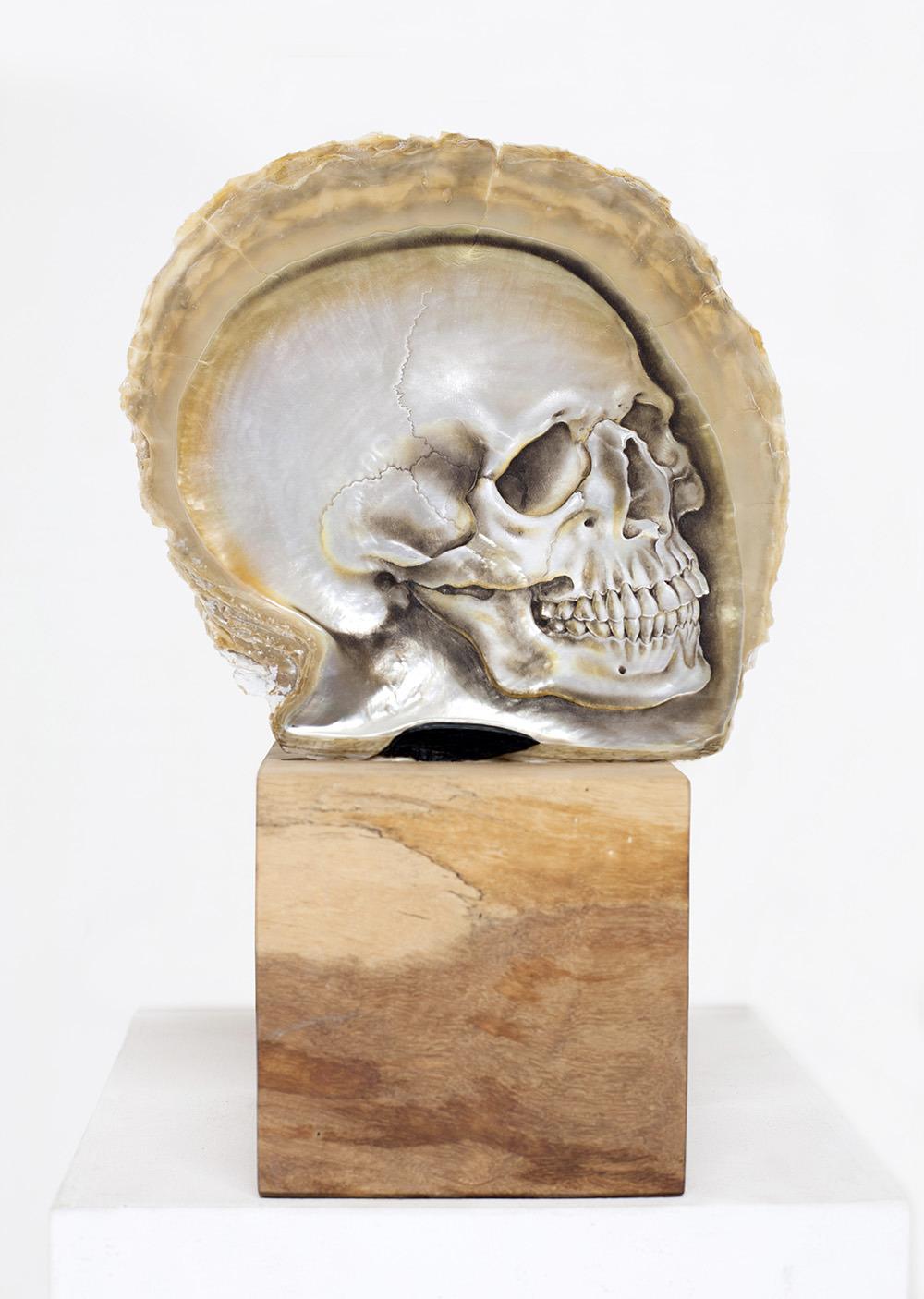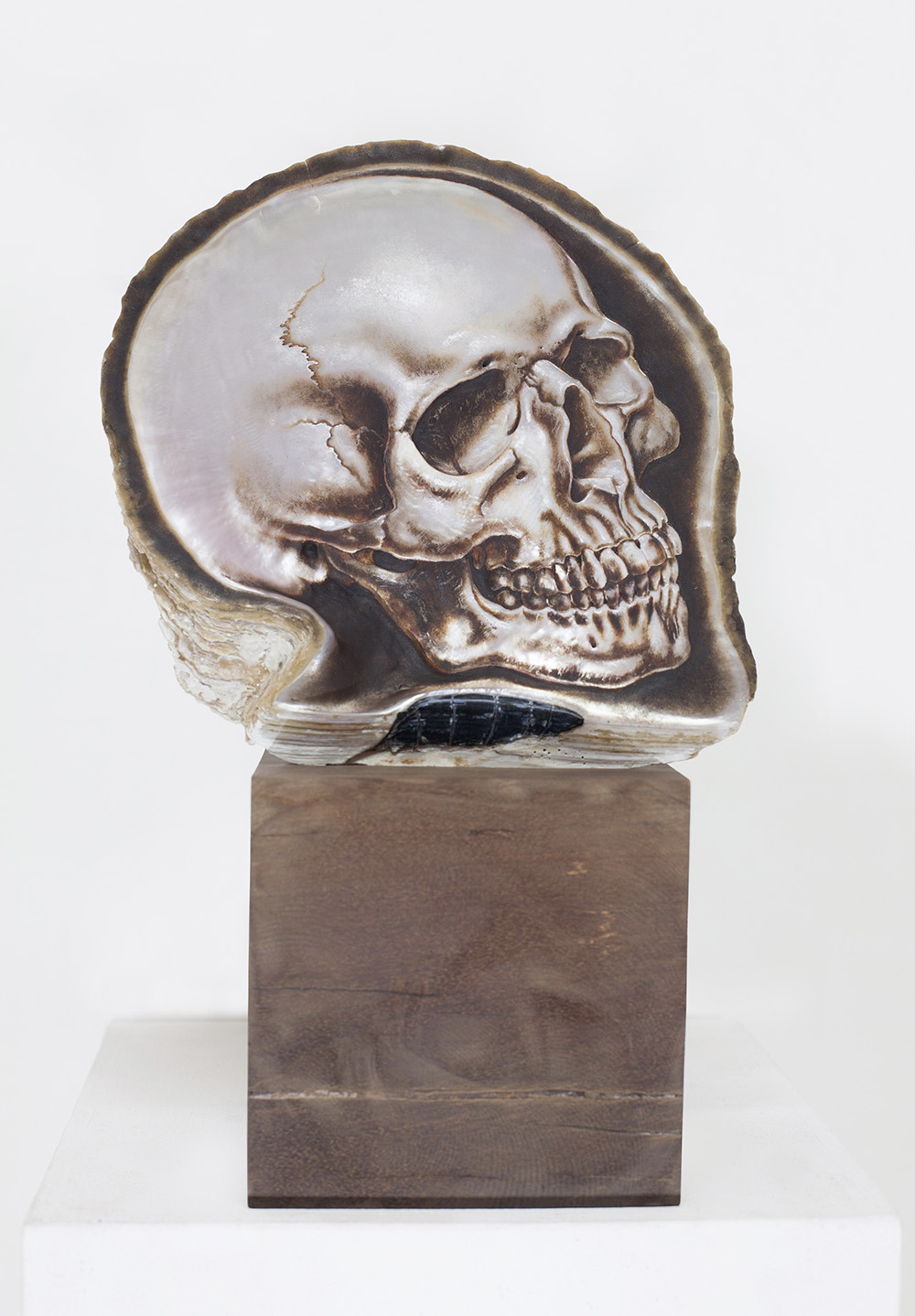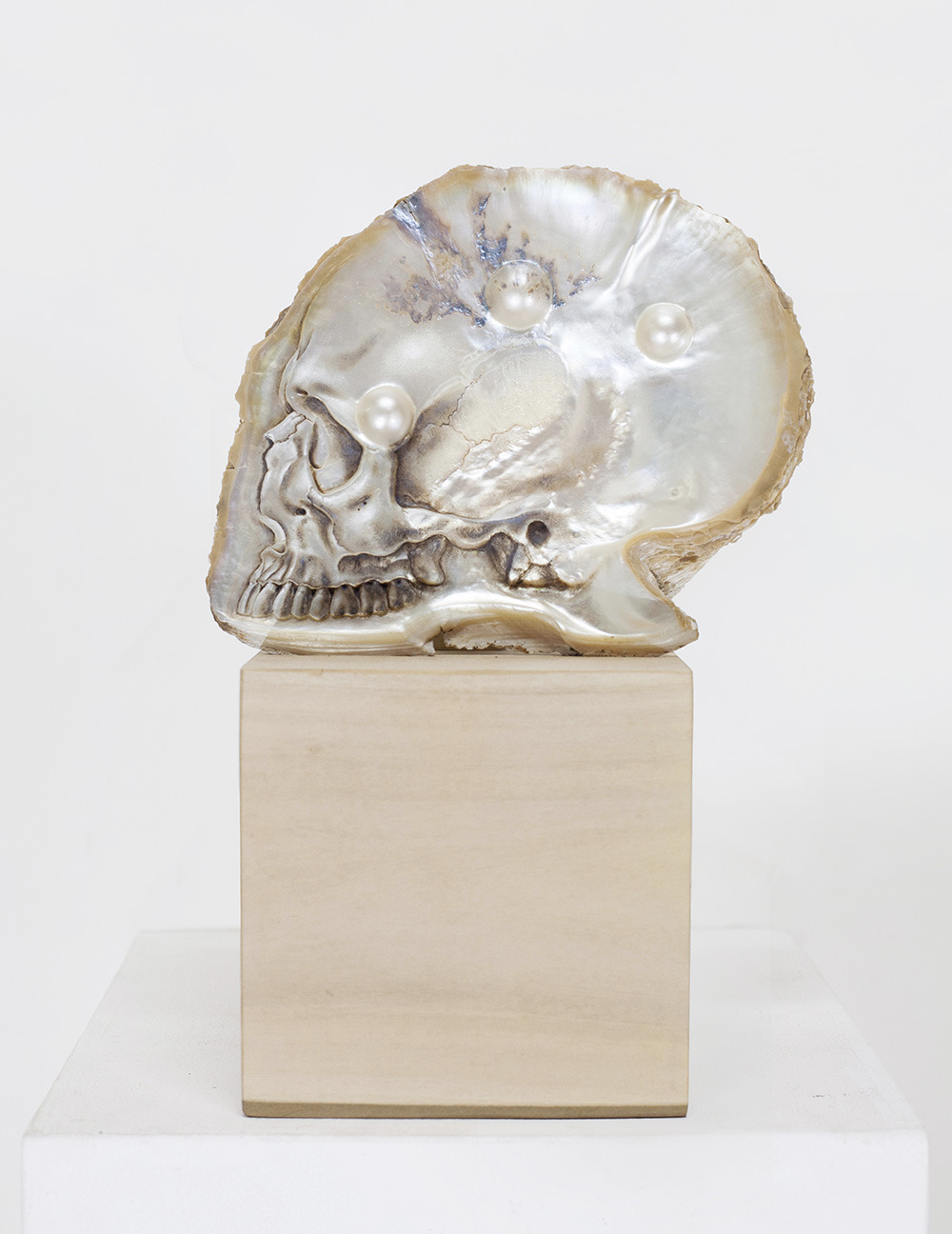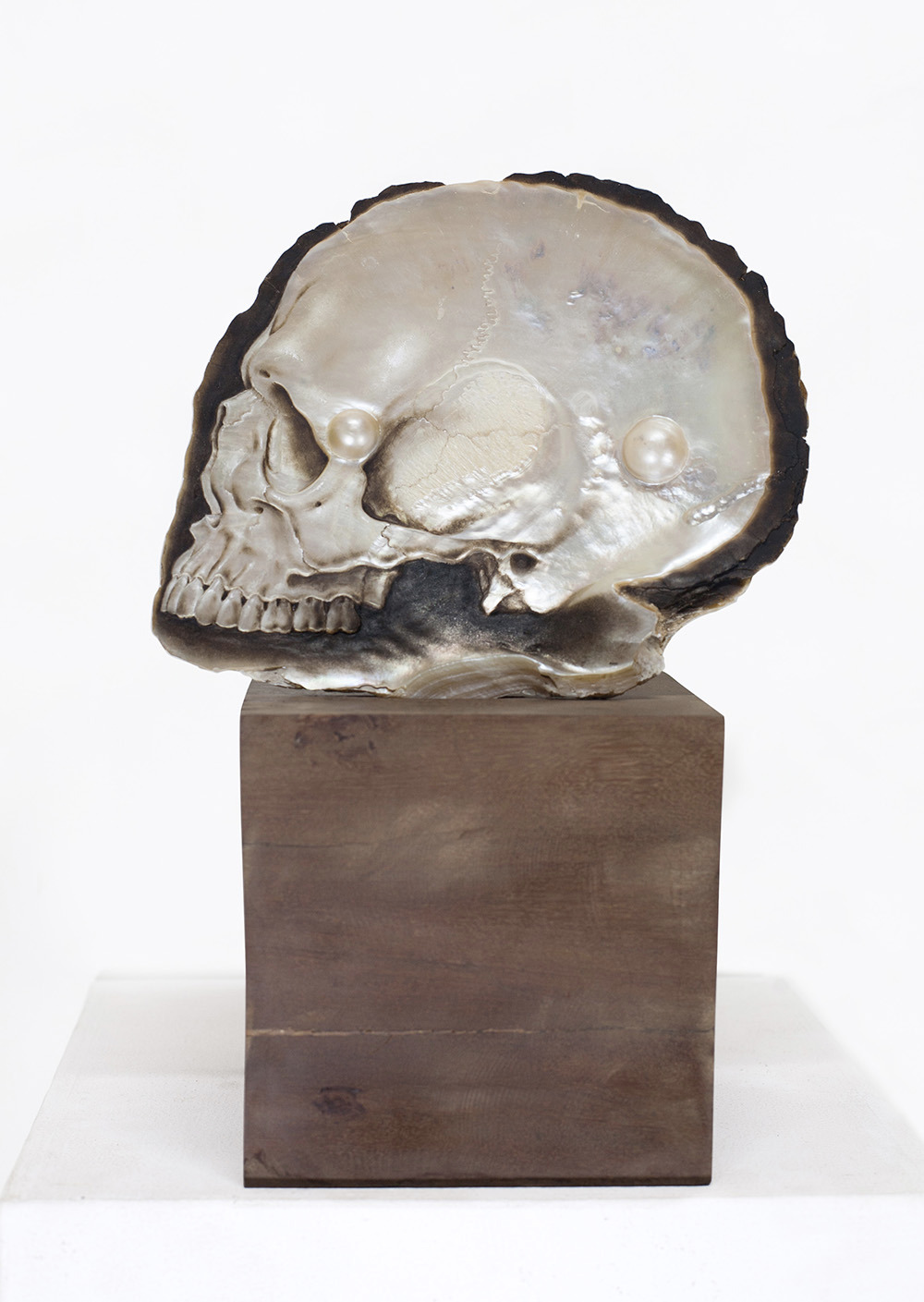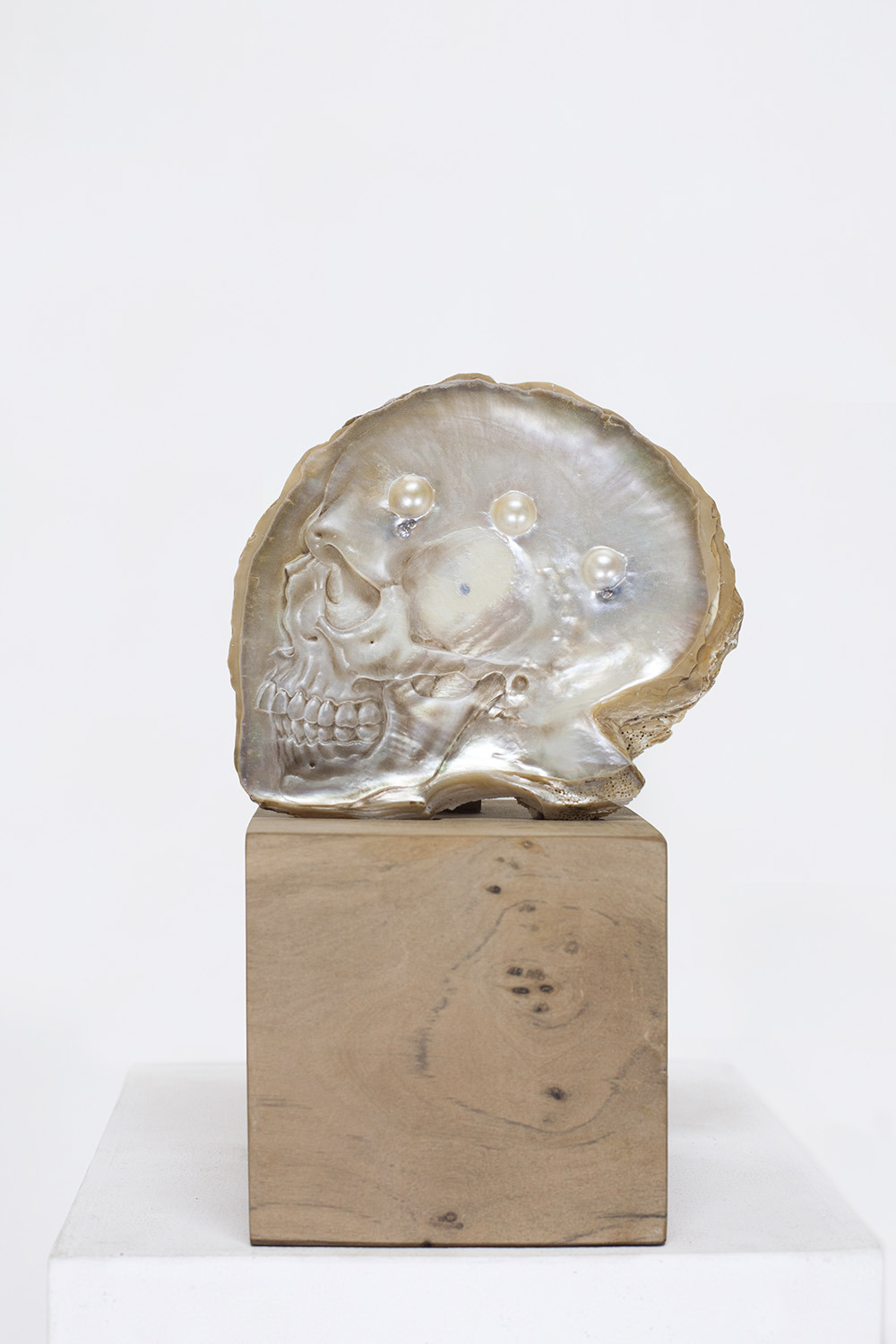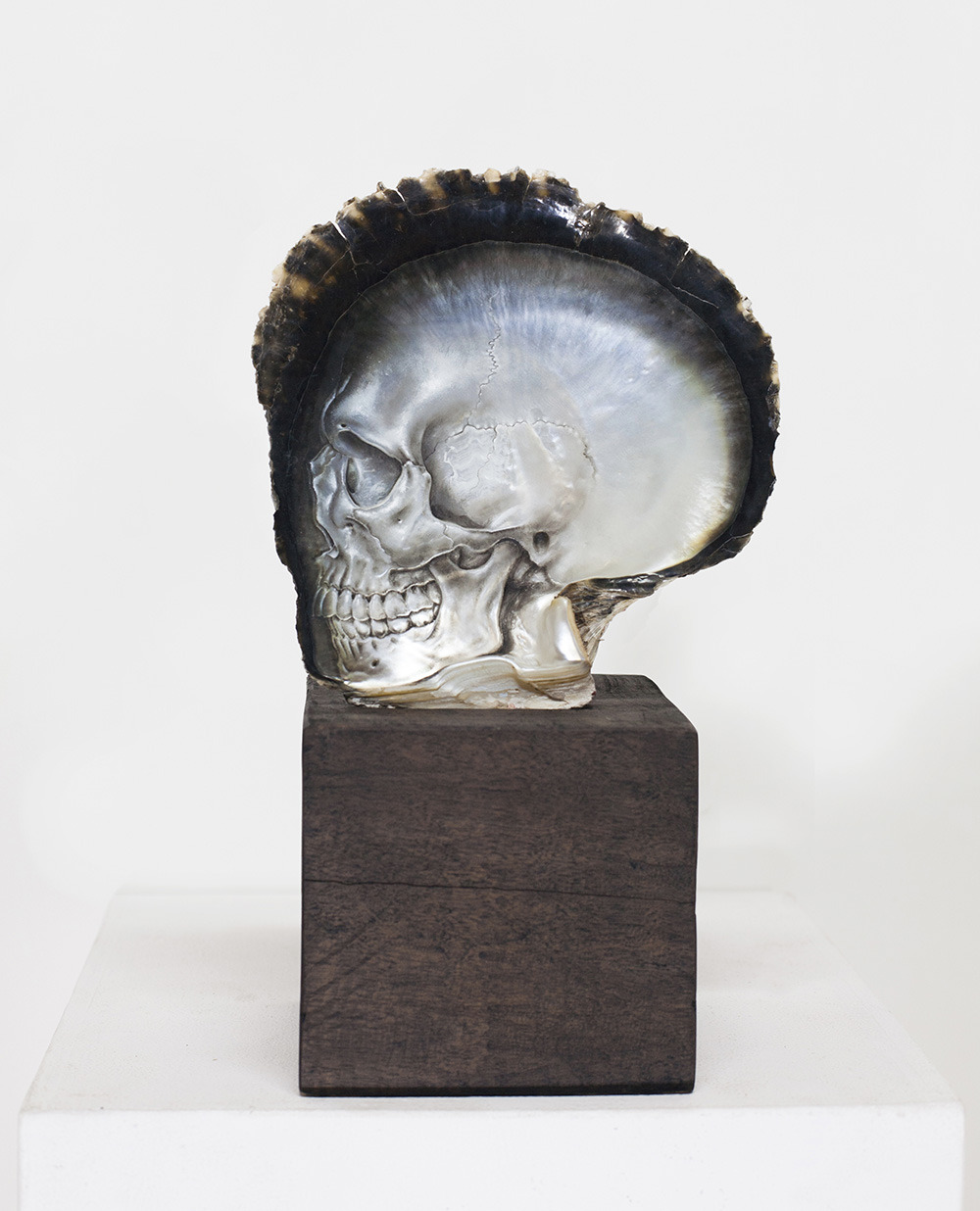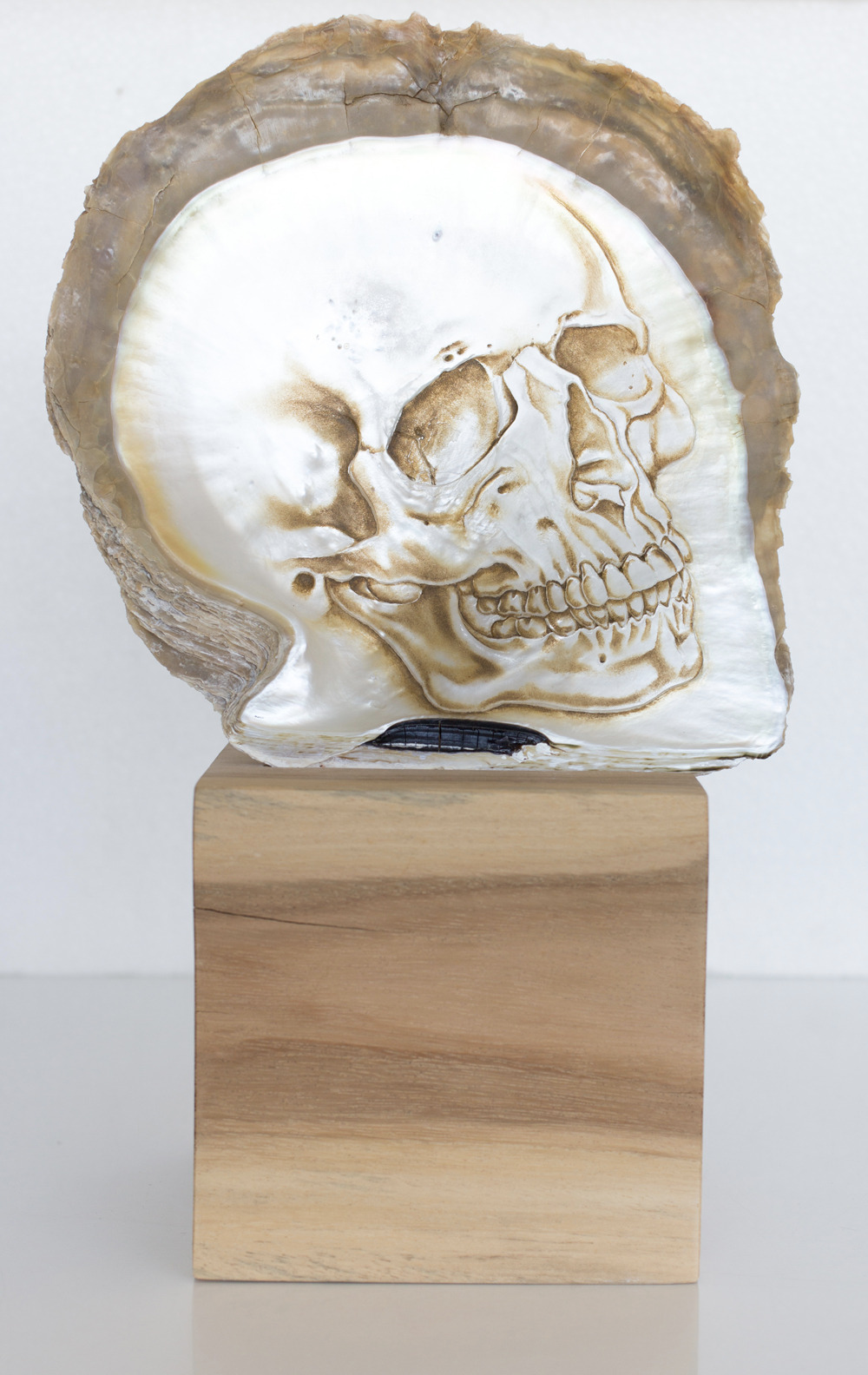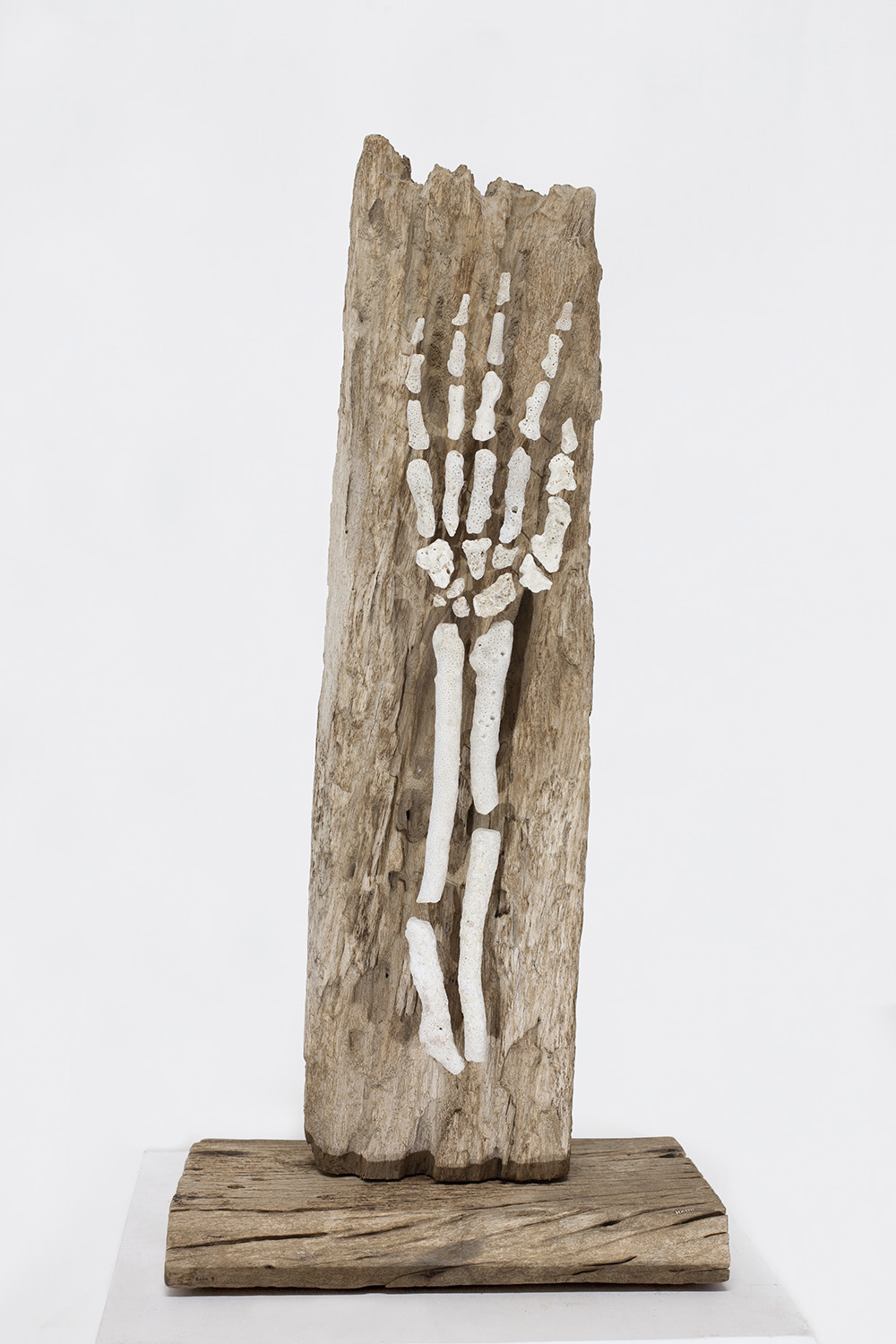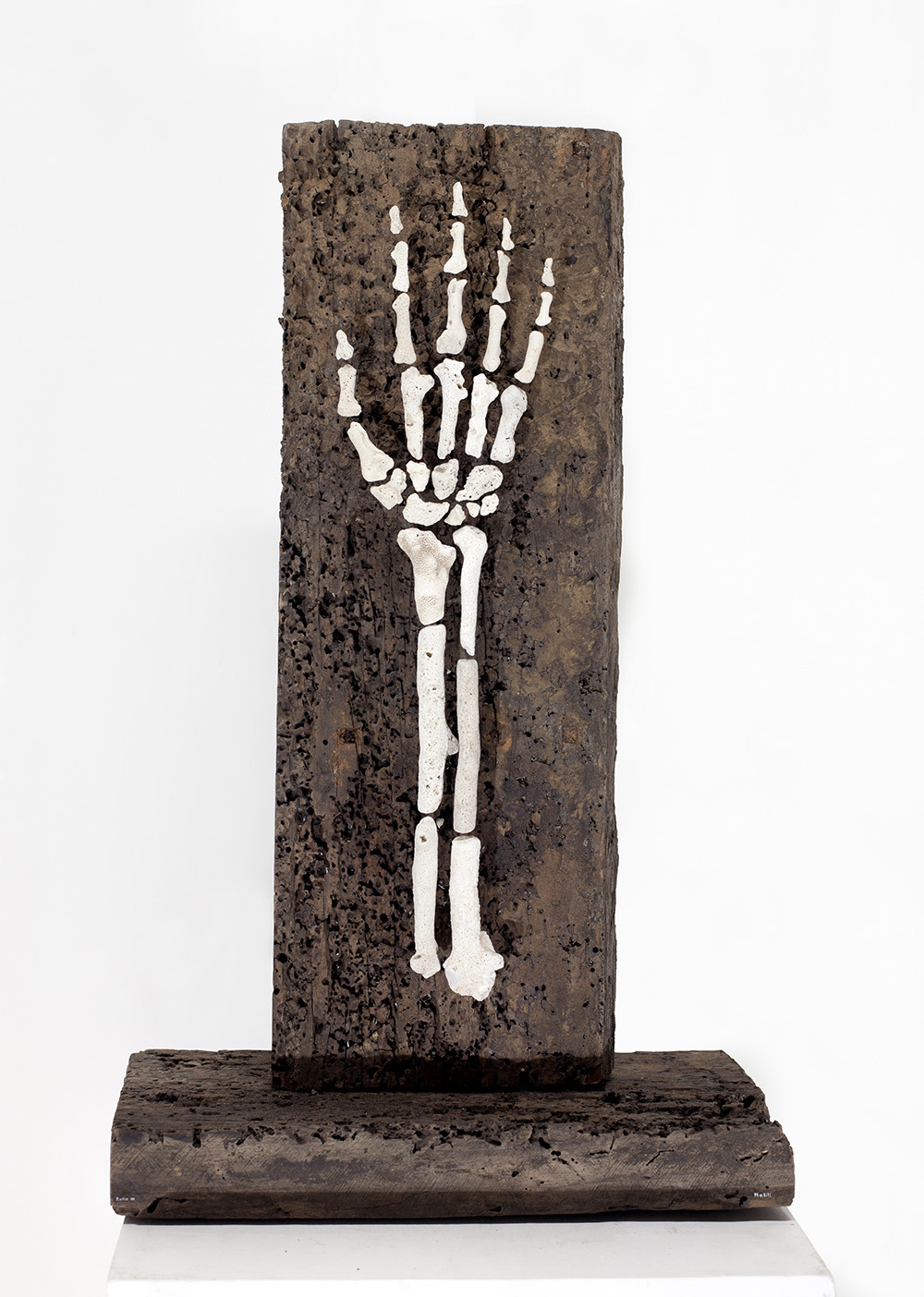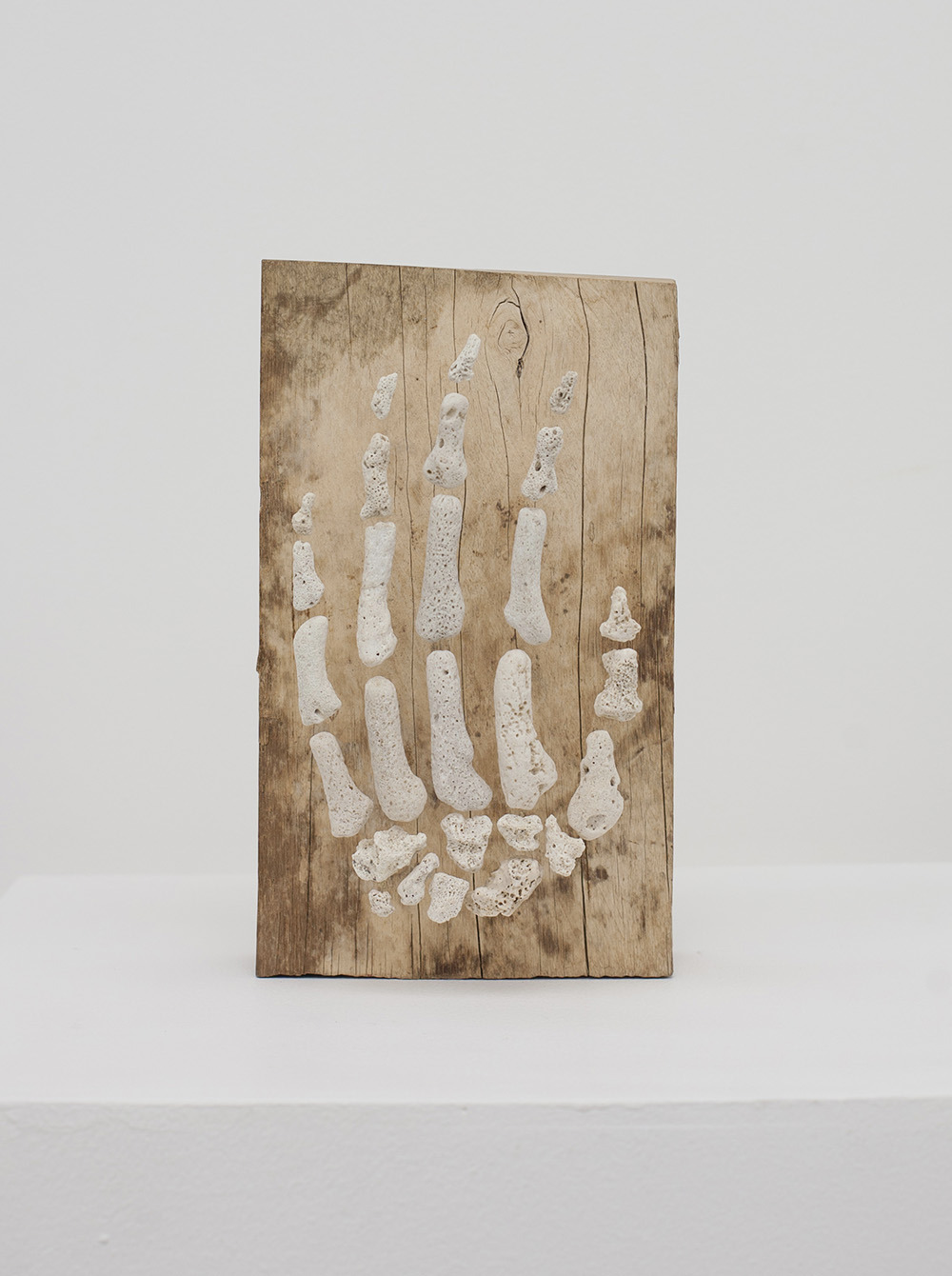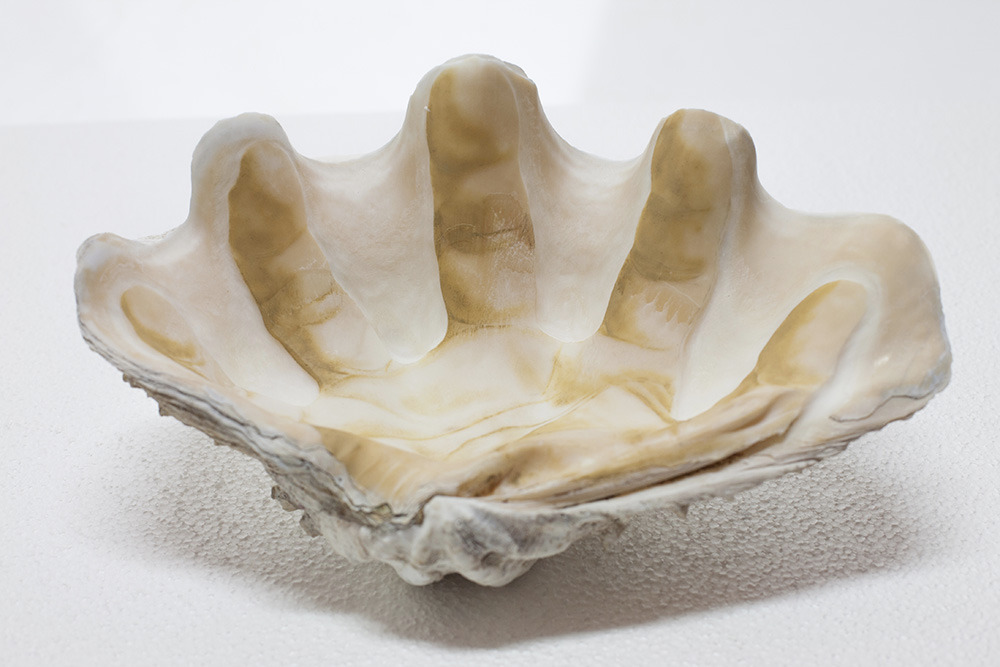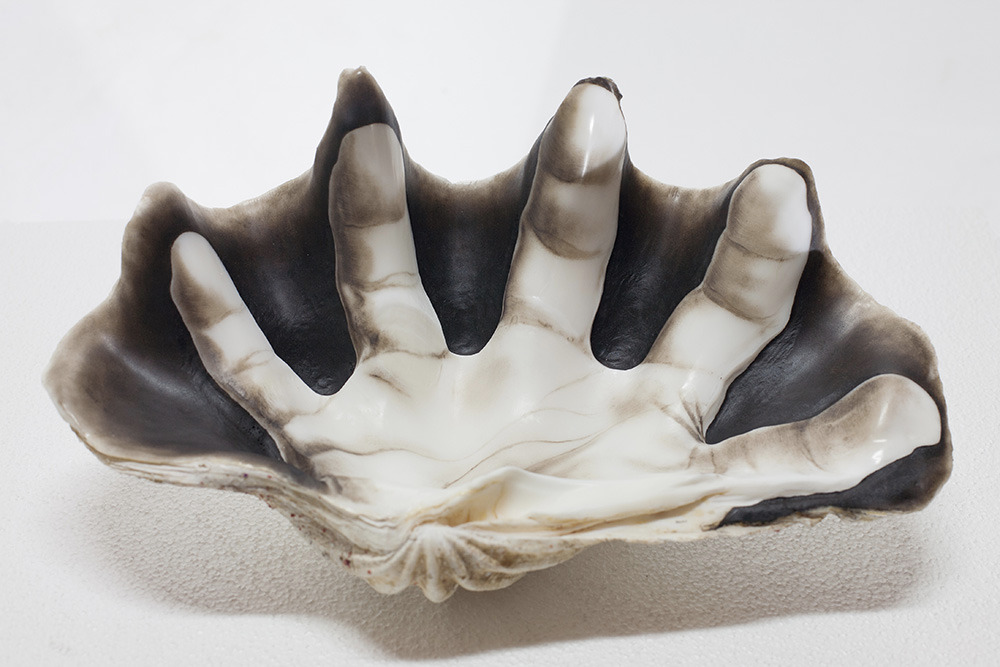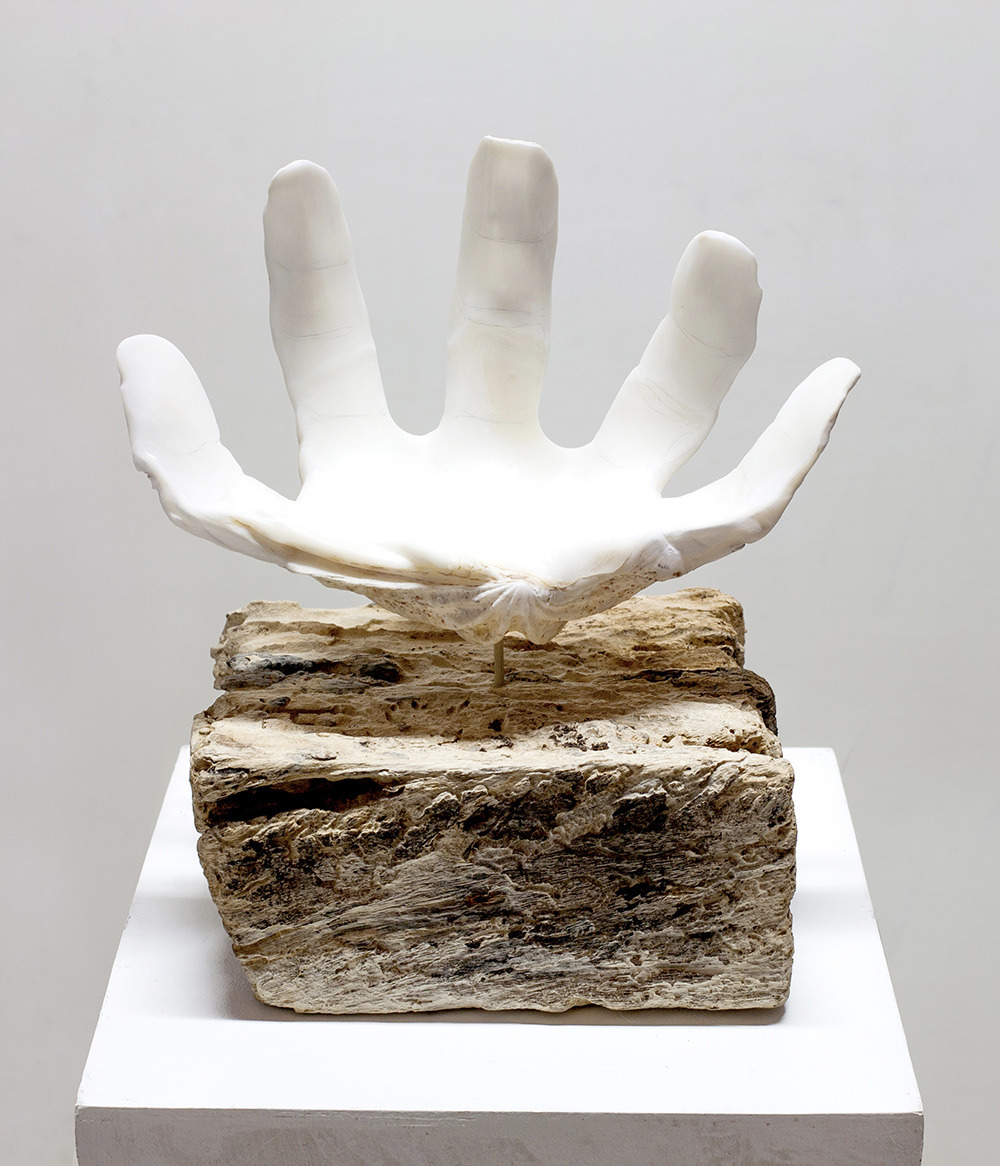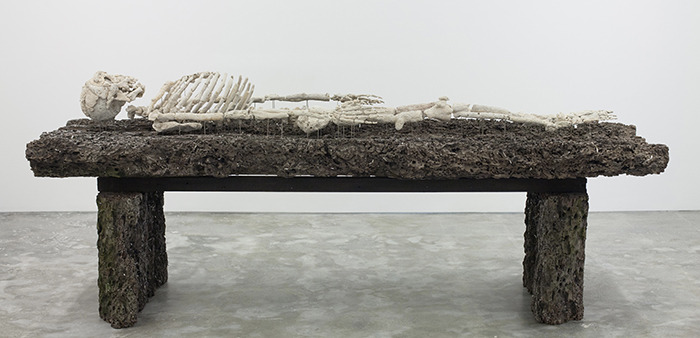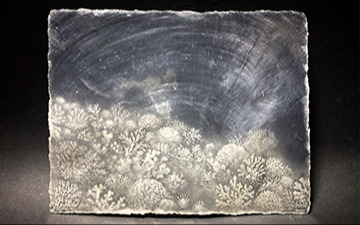
Echo
Gregory Halili
Silverlens, Manila
About
A life-size skeleton created entirely from uncut, found corals atop a massive, raw driftwood; skull profiles and open hands meticulously painted and fashioned on giant clams and mother of pearl shells—the new works of artist Gregory Halili may be seen, from an untrained perspective, as nothing more than a visual paean to the sea, a sculptural ode to that overwhelming space that still remains foreign to us despite man's numerous explorations of it. But a Halili piece doesn't leave its audience just scratching the surface; just like the sea, it holds waves of truths and memories.
While Halili is more known in the art circle for his miniatures, minute yet intricate images that have always paid homage to his homeland and its cultural rarities, the artist, in his new visual offering titled Echo, has curiously veered away from the artistic tradition that typifies his oeuvre. Instead of painting delicate and wistful portraits and sacrosanct imagery, Halili has taken on a more sculptural approach and shifted to using large materials.
His biggest piece Phenomenon measures 7 x 2.4 x 2.9 feet, for instance, and took the longest time to finish due to its complexity. The change was a gradual progression, but it meant that the artist, whose training was pure painting, had to go out of his way to understand the creation of a singular sculpture. Thus, Halili's works now are also a testament to the artist's will to create and finish what he has started—a story of personal struggle and determination.
The decision to eschew small materials also meant more physical labor and travel time for sourcing the items that went to building his larger pieces, with Halili combing and searching for found corals along the beaches of Calatagan and Anilao, Batangas for the past two years. Scouring for samples in the right size and form was one of the hardest parts Halili had to endure for his art; there could be hundreds of samples but only two to three will be the perfect match.
But what kindled this obsession? A trip to the beach one summer. It didn't seem odd to Halili that the washed up and bleached corals he has originally chanced upon while combing through the debris in the shore mirrored human bones. Halili then was able to create a small skeletal hand on the spot. The semblance was immediately symbolic—and this resonates within Halili's latest repertoire.
Admittedly, Halili's homecoming greatly affected and influenced his art; it has now come full circle. After living in the United States for 25 years, Halili and his family now fully reside in the country. Years before, majority of Halili's pieces were inspired by and dedicated to unravel the Philippines' brilliance and beauty by way of his tipos del pais (types of the country) and letras y figuras (letters and figures)—all meant to trigger reminiscences. Now, his new body of work, although still nostalgic in a way, is a specific visual retort to the alarming state of our seas and milieu.
Composed of 15 works, Halili's Echo is a continuation of the artist's exploration of natural materials and one's symbiotic connection with nature. It presents the residual and lingering affection of man's doings to nature, the physical manifestation of the state of our environment, and, particularly, the life and death cycle that man and the elements go through. Many of us are blind to these realities, only mourning loss and death when we are faced with it head on. Halili then confronts his audience with this supposed macabre subject, but he does it so beautifully that his pieces, more than just being artistic expressions of mortality, alternately become vessels of memories and vestiges of truths.
There are infinite shapes that death can take, and the impressions they make upon us are just as varied. In Echo, Halili not only illuminates this fragility and fleetingness as a way to question one's impact to the world and in the best way he knows how, but shows his audience its non-gruesome nature, that the passing of life is an inevitable stage where one ultimately reconnects with nature to bring forth new life.
What's next for Halili? To date, the artist is still learning the different qualities of mother of pearl shells and preparing himself to tackle a pair of giant clams, about 37 inches and a hundred pounds each. At the end of the day, though, whatever the subject matter is for Halili's future visual and sculptural exhaustions, we can only expect them to be always honest and from the heart.
Words by Pam Brooke A. Casin
Gregory Halili (b. 1975, lives and works in Cavite) carves and paints mother-of-pearl shells, creating memento
moris. Halili received his B.F.A. from the University of the Arts in Philadelphia. He returned to the Philippines in 2013 after 25 years in the United States. Halili’s work focuses on the art of miniatures with interest in the notion and idea of memory, life, death, and cycle.
His work has appeared in numerous exhibitions and shows, including the John Michael Kohler Arts Center in Sheboygan, Wisconsin; The Butler Institute of American Art in Youngstown, Ohio; The Hammond Museum and Sculpture Garden in Salem, New York; Ayala Museum in Makati City; Jorge B. Vargas Museum at the University of the Philippines in Quezon City; West Gallery in Quezon City; Silverlens Gallery in Makati City and Nancy Hoffman gallery in New York City. He is one of the Filipino artists presented in the Singapore Biennale 2016.
Works
